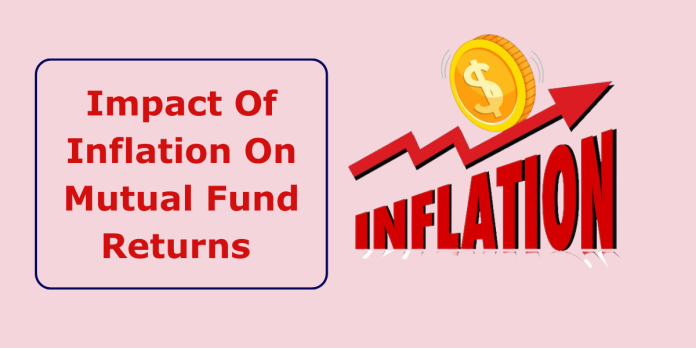Mutual funds are a popular investment choice for individuals seeking to grow their wealth over time. However, to make informed investment decisions, it’s crucial to understand the impact of factors that can influence your returns. One such factor is inflation, a silent wealth eroder.
Understanding Inflation
Inflation is the gradual increase in the general price level of goods and services in an economy over time. When inflation occurs, the purchasing power of money decreases, which means that the same amount of money buys fewer goods and services. In other words, your money becomes less valuable. In the context of mutual funds, understanding how inflation can erode your returns is vital for setting realistic financial goals and ensuring your investments keep pace with rising living costs.
The Impact of Inflation on Mutual Fund Returns
- Reduced Real Returns: When you invest in a mutual fund, you aim to achieve positive returns on your investment. However, these returns should be viewed in the context of inflation. If your mutual fund generates a return of 8% in a year, but inflation is running at 3%, your “real return” is only 5% (8% – 3%). This means your money’s purchasing power has only increased by 5%.
- Erosion of Purchasing Power: Inflation erodes the purchasing power of your money. For example, if you have invested Rs. 1,00,000 in a mutual fund that generates a 7% return, and the annual inflation rate is 3%, your investment will grow to Rs. 1,07,000. However, due to inflation, the equivalent purchasing power of Rs. 1,07,000 will be less than Rs. 1,00,000 a year ago.
Example and Calculation
Example: Suppose you invest Rs. 1,00,000 in a mutual fund that generates an annual return of 10%. If the annual inflation rate is 4%, what will be the real return on your investment after one year?
Calculation:
- Calculate the nominal return: Nominal Return = Principal Amount × (1 + Annual Return) Nominal Return = Rs. 1,00,000 × (1 + 0.10) = Rs. 1,10,000
- Calculate the erosion of purchasing power due to inflation: Erosion of Purchasing Power = Principal Amount × Annual Inflation Rate Erosion of Purchasing Power = Rs. 1,00,000 × 0.04 = Rs. 4,000
- Calculate the real return: Real Return = Nominal Return – Erosion of Purchasing Power
- Real Return = Rs. 1,10,000 – Rs. 4,000 = Rs. 1,06,000
In this example, your mutual fund generated a nominal return of Rs. 10,000 (10% of the principal amount), but after accounting for the 4% inflation rate, the real return is only Rs. 6,000. This means that your investment has grown by Rs. 6,000 in real terms, considering the decrease in purchasing power due to inflation.
Read: All you Need to Know about Inflation
Mitigating the Impact of Inflation
To mitigate the impact of inflation on mutual fund returns, consider the following strategies:
- Invest in Inflation-Beating Assets: Some mutual funds, like equity funds, historically have the potential to outpace inflation. Diversify your portfolio to include assets that have the potential to generate higher returns over the long term.
- Review Your Investment Period: The longer you stay invested, the better your chances of earning returns that outpace inflation. Aim for a long-term investment horizon to increase your potential to combat inflation.
- Regularly Adjust Your Investments: Periodically review your investment portfolio to ensure it remains aligned with your financial goals and the prevailing inflation rate. Make adjustments as necessary to maintain your purchasing power.
Conclusion
Understanding the impact of inflation on mutual fund returns is essential for making informed investment decisions. While mutual funds can offer a way to grow your wealth, you must consider how they fare against the eroding effects of rising living costs.
By investing in assets that have the potential to outpace inflation and maintaining a long-term perspective, you can better safeguard your financial future and achieve real returns that maintain or increase your purchasing power over time. Remember that inflation is a constant economic force, and being prepared to combat its effects is a key part of successful investing.


